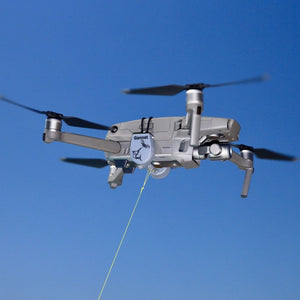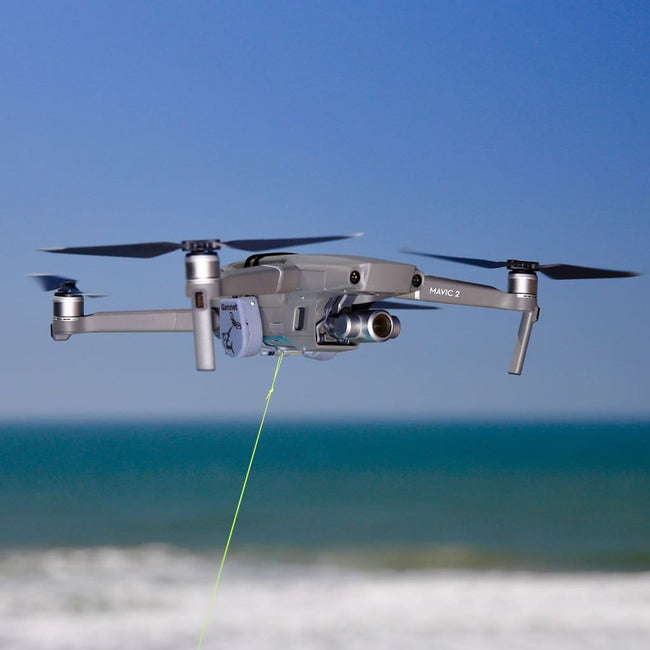
New Zealand has an exciting new method of fishing, drone fishing. This innovative new technique uses drone technology to open up new fishing opportunities. Drone Fishing NZ has a number of top retailers that can sell you a DJI or Splash drone. Splash drones, GoFish and custom-built fishing rods are also available.
Aerokontiki Drones
Sharkan offers a Fishhawk, a fishing drone that captures the action better. The drone's stabilized camera can shoot 12-megapixel photos at 30 frames per second and 4k UHD video at 12MP. The videos can be viewed on your smartphone. The drone offers a range of good transmission and flight time, as well as a spare batteries that can be charged.
Mobula
Mobula drones have been specifically designed for fishing. The drone can survive in wind up to 20 kph and is buoyant. It also includes safety features such an automatic return home, automatic release of payload, and three release methods. A water-returning feature means that your drone will always return to the surface if its battery dies.
Banks'
The use of a fishing drone has become a huge trend, gaining the attention of anglers and sports enthusiasts. A drone can present its own set of challenges. The drone is not recommended for fishing in shallow water. The second problem is when the drone crashes again in the same spot. This can make it difficult to trust the information from the video.

SplashDrone 4
Swellpro created the SplashDrone 4 waterproof drone with a new floating platform. The drone can be used for fishing parties or other water-related activities. It is made from corrosion-resistant materials, as well as industrial-grade ABS to withstand the most severe conditions. Smooth+, the SplashDrone 4's unique flight control system, gives you complete control of the drone and helps to keep it stable in all conditions. The drone's advanced technology allows it capture every angle and every moment in the sky.
Drones for Fishermen
You're in for a treat if you're a New Zealand Fisherman drone fisherman. Drone fishermen love snappers. They are not only stunning to look at but also taste amazing! These fish can often be found off the coasts on the North or South islands. They are most common during their spring spawning season, which is when large numbers of them congregate. You'll be able to catch these fish throughout the summer months, as well, as they are plentiful in the fall.
Flying a drone
To ensure your drone fishing trip in New Zealand is a success, you need to follow these guidelines. The law should be understood. It is illegal to fly a drone within 500m of any marine life. Your drone will be confiscated or damaged if you are not aware of the surroundings.
Payload for a drone
Although you can buy a drone to fish, it is important to be aware of the payload. You will need to find a drone with a payload capacity to carry heavy fish and enough endurance to fly for a long time. If you are only going to fly your drone for just a few moments, you will probably not be able to catch enough fish. Luckily, the technology behind drone fishing in New Zealand is getting better.

FAQ
Can I fly my drone around my neighborhood?
Yes! These are also known as UAVs (unmanned aerial vehicle). There are many different types of drones that you can buy today, including small quadcopters as well as large fixed-wing aircraft. The FAA recently updated its rules regarding commercial UAV use. You can now legally fly them to business purposes. Be aware that UAVs operating near airports could cause interference to air traffic control systems. You must get permission from the authorities before you can fly one.
Can I fly my drone indoors
You can fly your drone indoors. Your home must be free of hazards and obstacles. Avoid flying near heating vents, heating vents and air conditioning units.
What are the rules of operation for drones?
The FAA must register your drone. You will need to submit information about your drone including its weight and size as well as operating frequency. This registration process requires that you obtain an FAA identification code.
What laws apply to flying drones?
The Federal Aviation Administration (FAA), which regulates all aspects drone operations in the United States of America, is responsible for them. You must first obtain a FAA certification before you can operate a drone commercially. Then, you must complete a course in piloting skills and pass an exam. The final step is to pay the fee.
Is it legal to fly a drone in the United States?
Yes, flying drones in certain countries is illegal, such as Australia and Canada, Germany, Japan. New Zealand. Singapore. South Korea. It is legal in countries such as France, Italy Netherlands, Poland and Russia.
Statistics
- With the top 10% making over $100/h and the bottom 10% making as low as $10/h. (dronesgator.com)
- According to the multiple listing service (MLS), houses and apartments with drone photographs are up to 68 percent more likely to sell than those without pictures. (thedroneu.com)
- Research and Markets predict a growth rate of 51.1% over the next five years. (thedroneu.com)
External Links
How To
How to Fly Drones at a Beginning Level
A drone refers to a remote-controlled aircraft designed for aerial photography, surveillance and scientific research. Drone technology has existed since World War II. DJI's Phantom quadcopters became commercially available in 2010. There have been many drones made since then. These range from beginner-friendly drones like Parrot AR Drone 2.0 to more advanced multi-rotor craft like DJI Mavic Pro.
There are many ways to fly a drone.
-
Remote control – This technique uses a control device attached directly to your hands that allows you steer the drone around its flight path. There are two types of controllers available: joysticks and on/off switches.
-
Manual Control – This allows remote operation of the drone via GPS coordinates using a smartphone application. Follow the instructions of the app to track the exact location you want the drone go.
-
Autonomous Flight – This is when the drone handles all the piloting tasks. It is basically flying autonomously and without human intervention. A drone must have a builtin camera and sensors capable to capture images and other data.
-
Triggered Flight: This is similar in concept to manual control. The pilot manually creates a route and the drone then follows it until it reaches that endpoint. Once the programmed route has been completed, the drone returns to the base automatically.
-
Landing Gear- Some drones include landing gear that allows for safe landing if the power goes out or they run out of batteries.
-
Goggles: Some pilots use goggles in order to protect themselves against debris when operating.
-
Camera - Certain drones come with cameras that allow you to take photos and videos from high above.
-
Obstacles. Some drones can have obstacle avoidance technology that stops them from hitting obstacles.
-
Speed - Some drones can reach speeds of over 40 mph.
-
Battery Life – Most drones will last 20 minutes to three hours depending on how powerful they are.
-
Some drones have a range of up to 30 miles, depending on their model.
-
Power source - Some drones require an external power source; others work off internal batteries.
-
Weight - Some drones weigh less than 1 pound, whereas other models weigh up to 4 pounds.
-
Size - From small drones that can be carried in the palm of one's hand to larger drones that weigh over 50 pounds, drones come in a variety of sizes.
-
Price - All drones fall within a specific price range, from high-end models that can cost thousands of dollars to lower-cost options starting at $100.